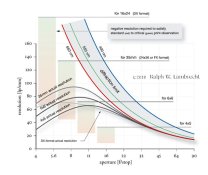- Joined
- Sep 29, 2009
- Messages
- 66
- Format
- 35mm
I have seen a difference in centre sharpness between using some lenses at full aperture and stopping down to, say, f5.6 but how about small apertures? Between F11 and F22 I can't see any difference in a 10x 8 print. I am talking centre sharpness rather than depth of field. Is it just with very large prints that this is a worry? I suppose it is to do with refraction. I use 35mm and medium format.
thanks
Dave
thanks
Dave



 (unless you use a Minox, in which case Walter Zapp specifies the aperture for you
(unless you use a Minox, in which case Walter Zapp specifies the aperture for you  )
)